Where and how best to grow Pink Honey tomato
The quantity and quality of the harvest greatly depends on the selected variety. Despite the wide variety of choices, the Pink Honey tomato is popular with both beginners and advanced gardeners due to its unpretentiousness and high quality fruits.
From these tomatoes you can prepare a variety of dishes that will not only be beautiful to look at, but also very tasty and healthy.
Characteristics and description of the tomato variety
Tomato Pink Honey is a variety of West Siberian selection. The variety is included in the state register of the Russian Federation and allowed for cultivation since 2006. The Pink Honey tomato was bred by domestic breeders for the conditions of the Russian climate.
Variety mid-season, suitable for growing both in greenhouse conditions and outdoors ground. The bush itself is deciduous. The plant is non-hybrid, determinant, in a greenhouse reaching a height of 1.5 m, and in open ground - 1 m. The tomato leaf is medium in size, dark green in color.
The ripe fruit is pink in color, large in size and heart-shaped with a pointed end. As the fruits grow, they may become round in shape. The weight of one tomato can be 300-600 g, depending on the number of ovaries (from 3 to 10 on the racemes).
The fruit ripening time from the moment of sowing is 115 days. The harvest takes place mainly at the end of summer. From 1 sq. m of plantings you can get up to 4 kg of product.
The variety has a distinct taste, the fruits are fleshy, with a high content of nutrients. They contain tyramine, which normalizes metabolism, the functioning of the endocrine glands, and dopamine levels. Tomato is ideal for people suffering from kidney and cardiovascular diseases.
The fruits serve as an excellent ingredient for salads, sauces, for making tomato juice and paste, but are not suitable for canning due to their thin skin.
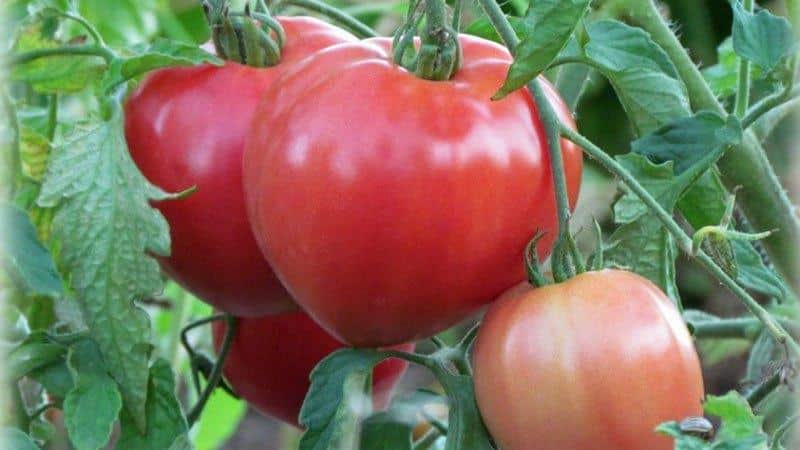
Pros and cons of the Pink honey variety
Experienced gardeners can tell you about the advantages and disadvantages of this variety.
Among the disadvantages are the following:
- Ripe fruits are characterized by a short shelf life and are also poorly transportable.
- Large fruit sizes are inconvenient for pickling in its entirety.
- When grown in conditions of excess light, a green spot forms near the stalk, which can only be eliminated by removing the tomato unripe and placing it in a dark place for ripening.
- The variety is susceptible to diseases because it is not a hybrid.
The advantages include the following:
- Growing the Pink Honey tomato is possible throughout Russia.
- You can prepare the seeds yourself (since the variety is not a hybrid).
- Large, fleshy fruits with a pronounced sweetish taste.
- Tomato fruits are widely used in cooking.
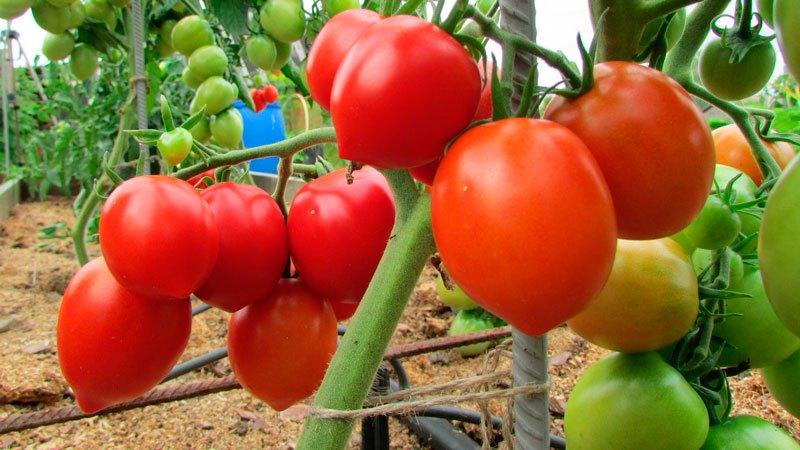
Growing Tomato
Sowing of seeds is carried out 60-65 days before planting in a permanent place. The seed material is soaked in water for 24 hours. Another way is to place it in a damp cloth for 3 hours.
It is better to sow in fertilized soil. Furrows are made in the ground and seeds are placed in them at a distance of approximately 1.5 cm from each other. After this, the planting material must be sprinkled with soil and watered. Next, the containers are covered with film and sent to a warm place.
After the first shoots form, the film is removed and seedlings send to a well-lit place, spraying with warm water. After two true leaves appear, a pick is made, which consists of transplanting the seedlings into freer containers so that they have enough space for further growth and development.
Plant care
Rose honey is a drought-resistant variety, for which excessive watering can result in diseases and growth inhibition. Experts warn that waterlogging of the soil can lead to the appearance of gray rot or the development of diseases "blackleg". It is recommended to plant the plant in shady areas for better growth. Direct sunlight causes leaves on bushes to wilt.
In conditions of sufficient lighting, regular watering, fertilizing with mineral fertilizers, and also by observing the necessary protective measures in the fight against diseases and pests, a high yield can be achieved. As the plant grows, it requires tying up the bush parts, as well as carrying out the pinching procedure (removing side shoots on plant stems).
Forming stepsons inhibit the growth of the plant and deprive it of nutrients. The pinching procedure is carried out manually in the morning and in dry and warm weather.
Important.For 1 sq. m area it is recommended to plant no more than 3 plants.
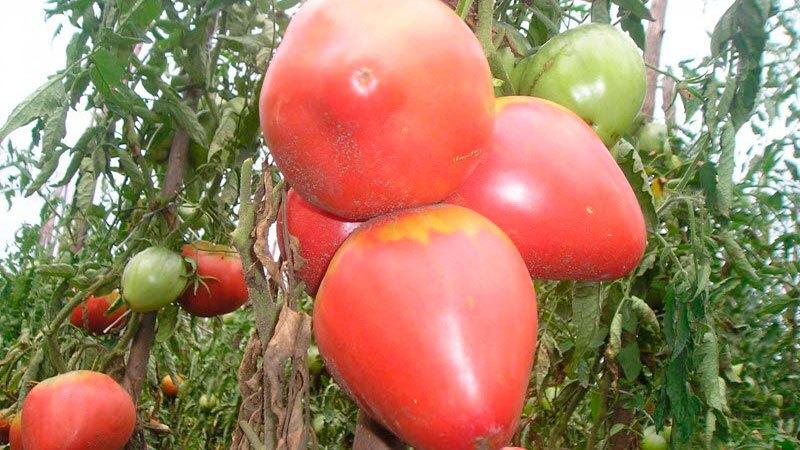 The rules for watering tomatoes with Rose Honey are as follows:
The rules for watering tomatoes with Rose Honey are as follows:
- first watering - 4 liters per plant at a time, immediately after planting in a permanent place;
- the second watering occurs only after 10 days;
- Before and during the flowering period, water the bushes abundantly every week;
- accompany the beginning of fruiting with moderate watering - 2 times a week;
- Water a plant with ripe fruits once a week.
- It is important to moisturize the bush only in the root zone with warm water. Drops of water falling on the leaves of a plant can cause them to burn.
Watering the plants is usually done in the morning or evening hours, when there is no heat.
Like all nightshade crops, the Pink Honey variety is very sensitive to heat. However, the plant does not tolerate extreme heat. The optimal temperature for plant growth is +22-23°C.
Important. At low temperatures (less than +15°C), the processes of flowering and fruit formation may be inhibited, and at high temperatures (over +35°C), pollination may be inhibited, which can cause infertility. In this case, growth stimulants will be required.
The use of fertilizers can increase productivity and improve the taste of fruits.
For intensive growth of the green (vegetative) part, nitrogen and other organic fertilizers are used. During the fruiting period, it is important not to overuse nitrogen fertilizers, which can lead to intensive growth of green mass, which will negatively affect the yield.
Phosphorus and potassium fertilizers are needed to form excellent taste properties of the fruit. Phosphorus, in turn, promotes intensive growth of the root system. It is applied in the form of dissolved superphosphate during irrigation. Ash is considered a universal fertilizer for tomatoes: the plant is watered with a mixture prepared by combining 1 cup of ash with 10 liters of water.
However, excessive use of fertilizers leads to reduced yields. It is not recommended to overuse nitrogenous substances, which are necessary only in conditions of insufficient growth.
It is considered optimal to carry out several feedings at different periods: 2 weeks after planting, before the beginning of the flowering period, during the formation of the ovaries and during the period of fruit ripening.
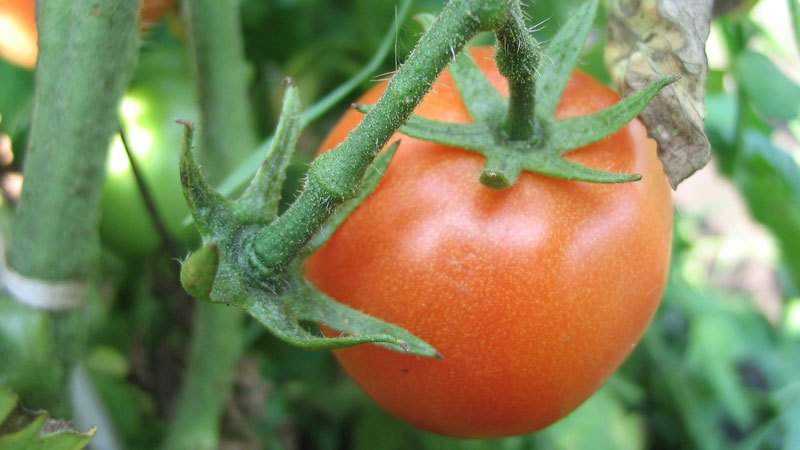
Growing in open ground
For seedlings, prepare an area with sufficient lighting without excess moisture. It is better to plant bushes in places where cabbage, carrots, radishes, legumes or garlic previously grew. To obtain a bountiful and healthy harvest, it is necessary to change the planting site every year to avoid the absorption of the same beneficial substances from the soil.
The beds begin to be prepared in the fall by digging them up and applying fertilizers: ash, compost, humus, potassium sulfate. Growing a plant in open ground is possible only when the air warms up enough.
To increase the resistance of plants to unfavorable external factors, they must be tied to pegs placed in the ground.
Growing in greenhouse conditions
The most common method of growing tomato seedlings is in a greenhouse, since it is still a heat-loving plant that will not tolerate late frosts. Also, in a greenhouse, tomatoes bear fruit earlier and are less susceptible to late blight.
The soil in the greenhouse is also dug up in the fall and enriched with fertilizers in the form of ash and humus.
In greenhouses, bushes can be tied to trellises, metal or plastic mesh.
For watering, you can install a drip irrigation system, this will reduce the risk of late blight and increase the yield of the plant.
Prevention of diseases and pests
The Pink Honey variety is not resistant to diseases, so plants need proper and regular treatment. In case of excess heat and humidity, the development of brown rot - cladosporiosis - is likely.At the initial signs of fungal diseases, treating the plant with fungicides, for example, Ridomil, will help.
During the flowering period, it is recommended to treat the leaves with boron solution - 1 g of boron per 1 liter of water. Another option is treatment with a mixture prepared from 10 liters of water and 2 tablespoons of copper sulfate. It is recommended to spray the affected stems with a 1% solution of calcium chloride.
The tomato variety is susceptible to late blight, caused by the fungus Phytophtora infestans. The ideal conditions for the development of the disease are humidity and coolness. The disease is accompanied by the development of brown and brown spots on the leaves and fruits of the plant. In the fight against late blight, fungicidal preparations are used, “Baktofin”, “Fitosporin”.
In the fight against insect pests, it is recommended to periodically spray the plant with a soap solution, which is used to irrigate even mature fruits.
Yeasts suppress the proliferation of pathogenic microorganisms and also promote plant growth and development. In 2.7 liters of settled water, dilute 100 g of yeast, 0.5 tbsp. sugar, cover with gauze and leave in a warm place, shaking from time to time. When the fermentation process is over, 1 glass of infusion is diluted in 10 liters of water and watered at the rate of 1 liter per bush.
A cloth soaked in vinegar can be an effective remedy against root pests. In order to protect the root system, apply fabric strips soaked in table vinegar. However, the effect of such treatment is short-lived, since the fabric requires constant renewal. Another good remedy against earthen insects is planting legumes on tomato beds.
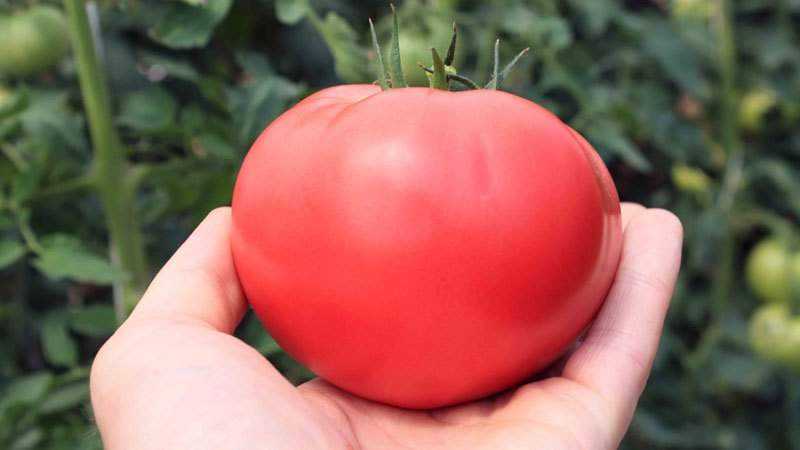
Reviews from gardeners
Here are some reviews from gardeners about crop yields:
Elena, 57 years old, Perm: “I’ve been growing tomatoes since 2013. The fruits grow large, weighing up to 700 g. The bush must be tied up, as it reaches a height of 2 m. The taste is incomparable, it perfectly complements salads, and it also makes excellent tomato juice!”
Vladimir, 46 years old, Tomsk: “I regularly grow the Pink honey variety, the photos and yield of which were once very impressive. The bush in open ground did not grow tall, but the fruits turned out to be quite large. The taste of tomato is sweetish and pleasant. I constantly choose new varieties, but I will undertake to grow this variety more than once.”
Lyudmila, 39 years old, Samara: “I tried different varieties of tomato. I studied reviews on various gardening forums and decided to try the much-praised Pink Honey variety. All seeds sprouted the first time, and rapid growth was observed after feeding with a superphosphate solution. The fruits grew weighing up to 500 g. The soil must be fertilized; I noticed the best growth on fertile soil.”
Conclusion
The leading advantage of the variety is its taste. The fruits have a pronounced sweet taste. Other advantages include the large size of tomatoes and high yields with different growing methods.
The Pink Honey variety was recognized as the best achievement of domestic selection for 5 years. Compliance with the necessary recommendations and rules for growing and caring is the key to a bountiful harvest of pink tomatoes.